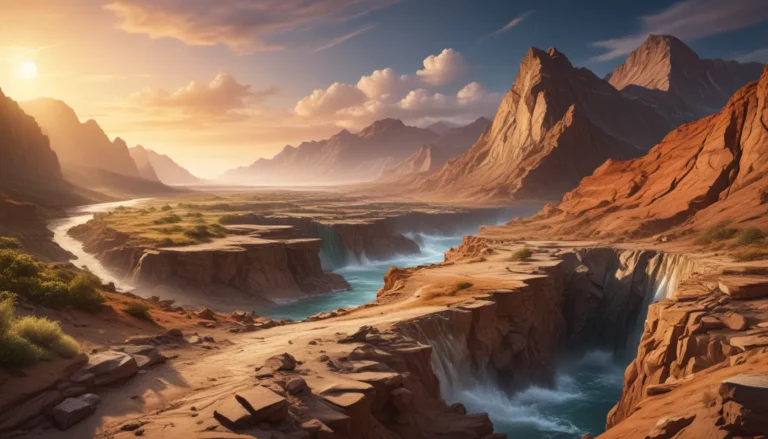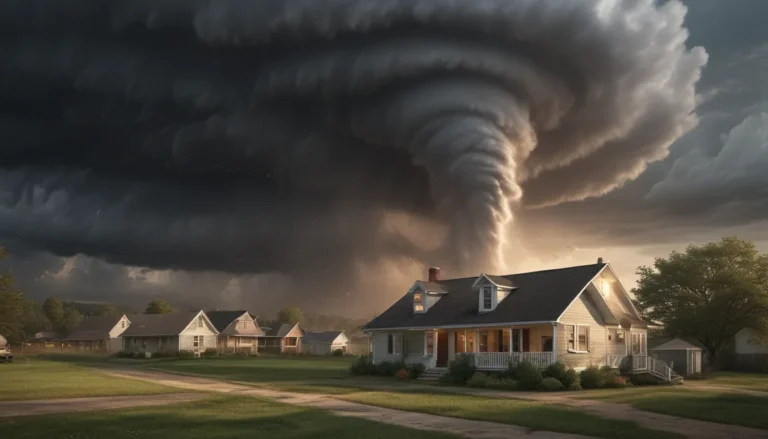A Note About Images: The images used in our articles are for illustration purposes only and may not exactly match the content. They are meant to engage readers, but the text should be relied upon for accurate information.
Plate tectonics, the captivating study of Earth’s lithospheric plates, offers a gateway into the dynamic world beneath our feet. This revolutionary theory, born in the mid-20th century, has reshaped our comprehension of continental movements, mountain formations, and oceanic shifts over vast epochs. By unraveling the mysteries of plate tectonics, scientists can predict and prepare for natural calamities, safeguarding communities from the ravages of earthquakes and volcanic eruptions.
Exploring the Earth’s Tectonic Plates
The Earth’s lithosphere is a mosaic of numerous large and small tectonic plates, drifting atop the semi-fluid asthenosphere below. These colossal plates engage in continuous motion, creating a tapestry of interactions that shape the planet’s landscapes and climate.
Unveiling the Origins of Plate Tectonics
The genesis of plate tectonics can be traced back to the early 20th century, heralding a paradigm shift in our understanding of Earth’s geological processes. This theory elucidates the emergence of earthquakes, volcanic activities, and the genesis of mountain ranges, offering insights into the planet’s intricate mechanisms.
The Mighty Pacific Plate
Dominating the tectonic realm is the Pacific Plate, spanning a vast expanse of approximately 103 million square kilometers. This imposing plate exerts significant influence, triggering earthquakes and volcanic outbursts with its colossal movements.
Driving Forces Behind Plate Movements
The motion of tectonic plates is propelled by convection currents churning within the Earth’s mantle. These currents, fueled by the heat from radioactive decay and the planet’s gradual cooling, orchestrate the intricate ballet of plate dynamics.
From Pangaea to Present: The Drift of Continents
In a journey spanning millions of years, the continents have embarked on a slow but incessant trek across the planet’s surface. Once united in the ancient supercontinent Pangaea, they have since dispersed to their current abodes, tracing an odyssey of continental drift.
The Relentless Wanderings of Continents
Astonishingly, the continents are in perpetual motion, traversing at a leisurely pace of 2-5 centimeters per year. This gradual shuffle, akin to the growth of our fingernails, underscores the subtle yet ceaseless dynamics shaping our planet.
Seismic Stirrings: The Impact of Plate Interactions
The collision, lateral sliding, or separation of tectonic plates can trigger seismic upheavals, culminating in earthquakes that reverberate across the planet. These tectonic tussles unleash seismic energy, setting the stage for tremors and temblors.
The Fiery Enclave of the Pacific Ring of Fire
Nestled along the fringes of the Pacific Plate lies the infamous Pacific Ring of Fire, renowned for its fiery manifestations and frequent seismic rumbles. Hosting over 75% of the globe’s active volcanoes, this volatile region epitomizes the raw power of tectonic forces.
The Majestic Himalayas: A Monument to Plate Collisions
The Himalayas, Earth’s loftiest mountain range, stand as a testament to the colossal clash between the Indian and Eurasian Plates. This monumental collision precipitated the uplift of the Earth’s crust, sculpting the awe-inspiring grandeur of these towering peaks.
Harvesting Nature’s Bounties: Plate Tectonics and Resources
Plate tectonics play a pivotal role in the distribution of natural resources, fostering the genesis of mineral deposits, oil reserves, and gas reservoirs along tectonic boundaries. These geological hotspots brim with valuable assets shaped by tectonic interactions.
The Enigmatic Mid-Atlantic Ridge: A Submerged Marvel
Meandering beneath the Atlantic Ocean is the enigmatic Mid-Atlantic Ridge, an underwater mountain range delineating the boundary between the North American and Eurasian Plates. This submerged marvel embodies the phenomena of seafloor spreading in a mesmerizing display of tectonic vigor.
Tsunami Tales: The Ripples of Plate Movements
The undulating movements of tectonic plates can incite cataclysmic tsunamis, triggered by colossal undersea earthquakes that displace vast volumes of water. These towering waves, born of tectonic turmoil, underscore the profound impact of plate dynamics on coastal regions.
The San Andreas Fault: A Transformative Boundary
California’s renowned San Andreas Fault epitomizes a transformative transform plate boundary, where the Pacific and North American Plates glide horizontally past each other. This geological juncture embodies the dynamic interplay of tectonic forces that punctuate the region with frequent seismic events.
A Climate Alchemist: Plate Tectonics and Earth’s Atmosphere
Over eons, plate tectonics have sculpted the Earth’s climate, shaping oceanic currents, atmospheric circulation, and heat distribution across the globe. These subtle orchestrations influence the planet’s climatic tapestry, unveiling the interconnected dance of geological and atmospheric forces.
Genesis of Life: Plate Tectonics’ Role in Evolution
Plate tectonics have woven a tapestry of diverse habitats and ecosystems, nurturing the evolution of life forms across the ages. These geological theatrics have catalyzed the emergence of myriad species, heralding the dynamic interplay between tectonic forces and biological evolution.
Unveiling the Evidence: Buttressing the Theory of Plate Tectonics
A myriad of evidential threads, from coastlines’ alignment to fossil imprints, mountain range configurations, and seismic activity hotspots, fortify the edifice of plate tectonics. These corroborative strands validate the theory, shedding light on the intricate mechanisms governing our planet’s geological processes.
Tectonic Frontiers: Convergent, Divergent, and Transform Boundaries
Plate boundaries unfold in a trifold tapestry of convergence, divergence, and transformation. Convergent boundaries witness plates colliding, divergent boundaries usher in plate migrations, while transform boundaries witness lateral plate movements, underscoring the dynamic diversity of tectonic interplays.
The Eternal Dance of Tectonic Forces
Plate tectonics persist as an indomitable force, sculpting the planet’s physiognomy through volcanic eruptions, seismic tremors, and continents’ slow drift. This ongoing chronicle of geologic dynamism embodies the ceaseless symphony orchestrated by tectonic movements.
Safeguarding Communities: The Vital Role of Plate Tectonics
Comprehending plate tectonics is instrumental in preempting natural calamities, enabling scientists to forecast and prepare for earthquakes, volcanic eruptions, and geological events. This profound understanding paves the path for safeguarding communities from the vagaries of tectonic upheavals.
Conclusion: Delving Into the Depths of Plate Tectonics
In a realm where continents collide, mountains soar, and oceans part, the enigmatic realm of plate tectonics unfolds, unfurling a saga of geological marvels. The 19 astonishing revelations about plate tectonics serve as windows into the Earth’s subterranean ballet, ushering us into a realm where the planet’s restless geology comes alive.
FAQs: Navigating the Realm of Plate Tectonics
-
What is plate tectonics?
Plate tectonics elucidates the movement and interaction of Earth’s lithospheric plates, sculpting the planet’s landscapes through seismic activities. -
How do plates move?
Plates are propelled by convection currents in the Earth’s mantle, ushering them to slide, collide, or disperse along tectonic boundaries. -
What are some examples of tectonic plates?
Major tectonic plates include the North American, Eurasian, Pacific, African, South American, and Indo-Australian Plates. -
Can plate tectonics predict earthquakes?
While plate tectonics provides insights into seismic activities, pinpointing precise earthquake occurrences remains a complex challenge. -
How has plate tectonics shaped Earth’s history?
Plate tectonics have left an indelible imprint on Earth’s evolution, directing the formation of continents, the trajectory of life forms, and the occurrence of geological events across epochs.
Illuminating Minds: A Testament to Our Commitment
Our dedication to presenting informative and engaging content reflects our mission to deliver enriching insights to our readers. Each fact shared on our platform is a contribution from a diverse community of users, ensuring a tapestry of authentic and fascinating knowledge. Trust in our unwavering commitment to quality and authenticity as we embark on a journey of exploration and learning together.






